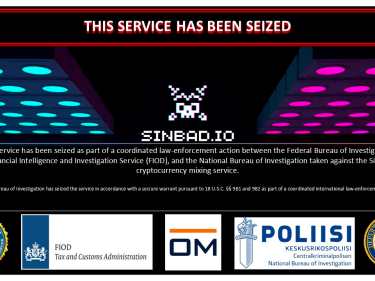-
Coinbase introduced cbBTC, which brings bitcoin to the Solana blockchain.
-
Bitcoin helps power trading, lending and borrowing on centralized crypto exchanges, but this crucial functionality requires extra effort in DeFi.
-
Some hope Coinbase’s move will spur more DeFi activity on Solana.
Nearly two years ago, FTX’s collapse blew a bitcoin-sized hole in Solana-based decentralized finance that hadn’t truly been filled — possibly until now.
Bitcoin (BTC) remains a benchmark asset for trading, lending and borrowing on centralized crypto exchanges. It takes extra effort to bring that crucial financial functionality to DeFi on other blockchains. Basically, someone must issue a token backed by and pegged to bitcoin on the chain.
Exchange giant Coinbase is trying to fill that role on Solana (SOL) with cbBTC. Launched Thursday, it lets traders swap in and out of the bitcoin-backed token by sending it between the exchange and their Solana wallets. That ease of entry and exit has contributors at many Solana-based protocols hopeful cbBTC can become a gold standard that ripples across the entire ecosystem.
One high-ranking official in Solanaland said there’s “much higher hopes” Coinbase’s cbBTC will be a hit — especially at a time when bitcoin, the world’s biggest cryptocurrency, is ripping to new all-time highs in the wake of Donald Trump’s election.
Solana DeFi hasn’t enjoyed a comparably straightforward bitcoin stand-in since the mysterious demise of the last standard-bearer, soBTC. That wrapped bitcoin token is widely believed to have been controlled by FTX. It died with the fraudulent exchange in November 2022.
SoBTC’s failure left the chain’s entire DeFi ecosystem without a widely recognized standard for trading bitcoin on Solana. This put it at a disadvantage to Ethereum DeFi, which has long had its own solution (including a new one from Coinbase itself) that Solana protocols accessed via bridging.
Coinbase’s native issuance of cbBTC on Solana “reduces the risk surface by half,” said InfraRay, a contributor to popular Solana-based decentralized exchange Raydium.
“We could see a surge of BTC liquidity on-chain, which could increase usage” in many different DeFi protocols, Tom said. “It’s early, but the hope is that robust liquidity for cbBTC could get some of those flywheels going.”
That’s only if Coinbase succeeds in turning cbBTC into Solana’s standard stand-in for bitcoin. Other companies have failed at that effort. 21.co has less than $1.5 million worth of its 21BTC circulating in Solana DeFi. Threshold’s tBTC hasn’t done much better.
By comparison, Coinbase has nearly $10 million worth of cbBTC ready to deploy into Solana DeFi, according to blockchain data. An additional $500,000 of cbBTC is already sloshing around trading pools on Meteora and Orca and in a reserve on trading protocol Kamino.
“I think and hope it’s gonna be big,” said Kamino co-founder Marius Ciubotariu. “There’s no reason for most BTC DeFi stuff to happen on Ethereum.”
Coinbase hasn’t historically participated in Solana DeFi. CbBTC is its first token issued natively on the Solana blockchain. The exchange is much more involved in the Ethereum world, particularly via its own layer-2 network, Base.
“Unlocking BTC utility for our customers across the on-chain economy is at the heart of our decision to launch cbBTC. Expanding support to Solana and potentially other chains gives our customers more options and aligns with our overall strategy of bringing billions of users on-chain,” a company spokesperson said.
In September, Coinbase first rolled out cbBTC on Base and Ethereum with the promise of supporting more chains later. But cbBTC traders moving bitcoin to Base get a small leg up on those moving bitcoin to Solana. Coinbase-to-Base bitcoin transfers are free; Coinbase-to-Solana bitcoin transfers cost 40 cents.








